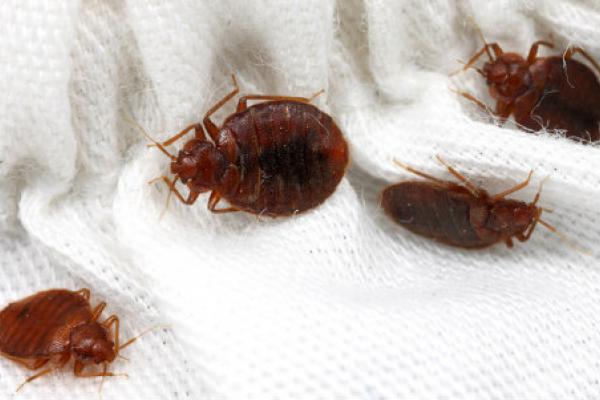Dealing with parasites in the home can be challenging, especially when trying to identify the pest causing the problem. Fleas and bed bugs are common culprits that reproduce indoors and feed on human or animal blood. Understanding the differences between these two pests is key to addressing the issue effectively.
Both fleas and bed bugs are tiny, adept at entering homes undetected, and capable of causing discomfort through their bites. Here’s how to distinguish between them and manage infestations successfully.
How Fleas and Bed Bugs Enter Your Home
These parasitic pests are excellent at hitchhiking into homes by latching onto various items or pets. Common ways fleas and bed bugs find their way indoors include:
- Clothing: Both pests can cling to garments and move with you.
- Luggage: Travelers often unwittingly bring pests home after staying in infested locations.
- Mattresses and Box Springs: Bed bugs, in particular, hide in crevices around beds.
- Pets: Fleas thrive on pets that go outdoors and can transfer to indoor environments.
- Used Furniture: Second-hand furniture is a common source of bed bugs and fleas.
Their ability to stay unnoticed during transit makes early detection difficult, which is why infestations often go unnoticed until the pests are well established.
Key Differences Between Bed Bugs and Fleas
While both fleas and bed bugs bite and are visible to the naked eye, several distinguishing characteristics can help identify the pest in your home.
1. Appearance
- Bed Bugs: These pests are reddish-brown, flat, and oval-shaped. Their bodies are broad and flattened, making them adept at hiding in crevices.
- Fleas: Fleas are also reddish-brown but have long, narrow bodies that are flattened from top to bottom. Their streamlined shape allows them to move through fur or carpet with ease.
2. Hosts
- Bed Bugs: These pests primarily target humans and rarely bite animals if people are present. They are commonly found in areas where humans sleep or rest, such as mattresses, couches, and bed frames.
- Fleas: Fleas prefer feeding on animals like cats and dogs but will bite humans if necessary. They are often found on pets, pet bedding, or areas where pets frequent.
It’s important to note that bites alone are not a reliable way to distinguish between fleas and bed bugs. Reactions to bites vary widely between individuals, and the appearance of the bite may not provide conclusive evidence.
3. Movement
- Bed Bugs: These pests move slowly and cannot fly or jump. They rely on crawling to travel between hiding spots and feeding areas.
- Fleas: Fleas are equipped with strong legs that enable them to leap great distances relative to their size. This jumping ability allows them to move quickly between hosts or surfaces.

Identifying an Infestation
Detecting an infestation involves observing the pests or signs of their activity. Here are some clues to look for:
- For Bed Bugs:
- Small reddish-brown insects in mattress seams or furniture.
- Tiny dark spots (excrement) on bedding or furniture.
- Bloodstains on sheets from crushed bugs.
- For Fleas:
- Small reddish-brown insects in pet fur or carpeting.
- Flea dirt (black specks of excrement) on pet bedding or skin.
- Pets scratching or grooming excessively.
While these signs can guide identification, consulting pest control in new york ensures accurate diagnosis and effective treatment.
Treating Bed Bug and Flea Infestations
Getting rid of bed bugs or fleas requires a thorough and strategic approach. Simple cleaning or bathing pets may temporarily reduce populations but won’t resolve an infestation.
For Bed Bugs:
- Wash and dry bedding, clothing, and curtains on high heat.
- Vacuum mattresses, furniture, and baseboards to remove eggs and insects.
- Encase mattresses and box springs in bed bug-proof covers.
- Seal cracks and crevices where bed bugs might hide.
For Fleas:
- Bathe pets with flea shampoos and use vet-recommended flea treatments.
- Wash pet bedding and vacuum carpets, rugs, and upholstery.
- Use flea sprays or powders on carpets and pet bedding.
- Treat outdoor areas frequented by pets, as fleas often lay eggs in the yard.
When to Call a Professional
Both bed bug and flea infestations can be difficult to manage without expert help. If home treatments are ineffective, contact a licensed pest control service for assistance. Professionals can:
- Accurately identify the pest.
- Implement targeted treatments for bed bugs or fleas.
- Provide guidance on preventing future infestations.
Preventing Future Infestations
To reduce the risk of bringing fleas or bed bugs into your home:
- Inspect second-hand furniture and mattresses before bringing them indoors.
- Use protective covers on mattresses and pillows.
- Regularly groom and treat pets for fleas.
- Vacuum frequently, especially in areas where pets sleep or play.
- Be cautious when traveling, inspecting hotel rooms and luggage for signs of bed bugs.
By understanding the differences between bed bugs and fleas, you can identify the pest in your home and take effective steps to eliminate the problem. Whether you handle it yourself or seek professional help, early intervention is key to maintaining a comfortable and pest-free environment.






